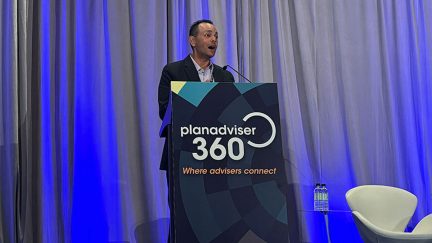Want the latest retirement plan adviser news and insights? Sign up for PLANADVISER newsletters.
The New Era of DC Plan Menu Design
Shelby George, senior vice president for adviser services with Manning and Napier, kicked off a recent webcast by observing the incredible growth that has occurred since the mid-1990s in the target-date fund (TDF) marketplace.
“In 1994, when TDFs began, there were literally just one or two products on the market,” she noted. “Today there are some 60 TDF series available for plan participants, on our count, and the number continues to grow. This growth has been incredibly important in helping non-experts invest in much more effective and rational ways.”
Since the mid-90s, the industry has seen great improvement in the due diligence support wrapped around TDF products, particularly on the “glide path evaluation and decision question.”
“The added sophistication has been really important for helping plan sponsors feel confident and participants get on a much better track,” George said. “We also know today that there are still some 40% of people who say they prefer to manage their money on their own outside of a TDF, so it’s also important to keep these folks in mind when creating the menu. These do-it-myself participants are engaged, and they are demanding tools and support as well.”
According to Manning and Napier survey data, as many as 27% of participants say they have actually proactively opted out of a TDF auto-enrollment at least once, because they feel they have the ability to make decisions for themselves.
“Opportunity has expanded for advisers serving as investment advice fiduciaries, alongside this trend,” George added. “The majority are acting in a 3(21) capacity today, and as we have more and more advisers take on fiduciary responsibility, we see sponsors engaging advisers to do due diligence on both TDFs and single-asset-class holdings.” The result is streamlined and simplified investment menus.
Chris McAvoy, product Manager for multi-asset class solutions, said he is encouraged to see advisers come to understand the critical importance of offering an appropriate qualified default investment alternative (QDIA) according to the unique needs of any given plan. Given his role at Manning and Napier, it’s no surprise he argued that automatically diversified and rebalanced investment funds will generally serve participants best.
NEXT: 20 funds or so remains the average
“The current menu today stands around 20 funds, on average, and that has been stable. So it remains very confusing for the typical participant to understand how to invest their money across the menu,” McAvoy warned. “As we move forward, the adviser’s role can be to understand how the environment will impact the way we create plan lineups and to think about diversification and new opportunities for growth, alongside capital preservation. We have to understand that the expectations looking forward are not great, and people have to adjust their behavior accordingly.”
Craig Abbott, vice president and retirement plan consultant, closed the webinar by observing this is a unique time for designing and implementing defined contribution plan investment menus.
“This is a unique and exciting time for menu design … there are more tools and resources available now than ever before,” he said. “Financial wellness programs have already helped a lot of participants become more engaged with their finances, both on the investment side and beyond. Education materials are getting more robust, helping participants understand and identify appropriate approaches.”
He pointed out that, for a lot of advisers, a big part of their value proposition remains sitting down one-on-one with participants. “But there are more technology offerings available now to make this work much more practical and efficient—the robo-advisers and managed accounts, etc. These are helping plans go beyond what a typical TDF can do, and that is encouraging,” he explained.
Abbott concluded that “one other clear trend” is the shift away from “an exclusive focus on growing the plans and maximizing accumulation. There is much more of a focus on the spending phase and how we can help retirees address the new market realities of living in retirement. How can we make DC-based retirements possible over timespans of 20 or 30 years? We need to expand the number of retirement income tools we offer participants.”
You Might Also Like:

Holistic Planning is Key to Navigating Retirement Income Challenges

Micro-401(k) Plan Market Ripe for Non-Specialist Adviser Growth



